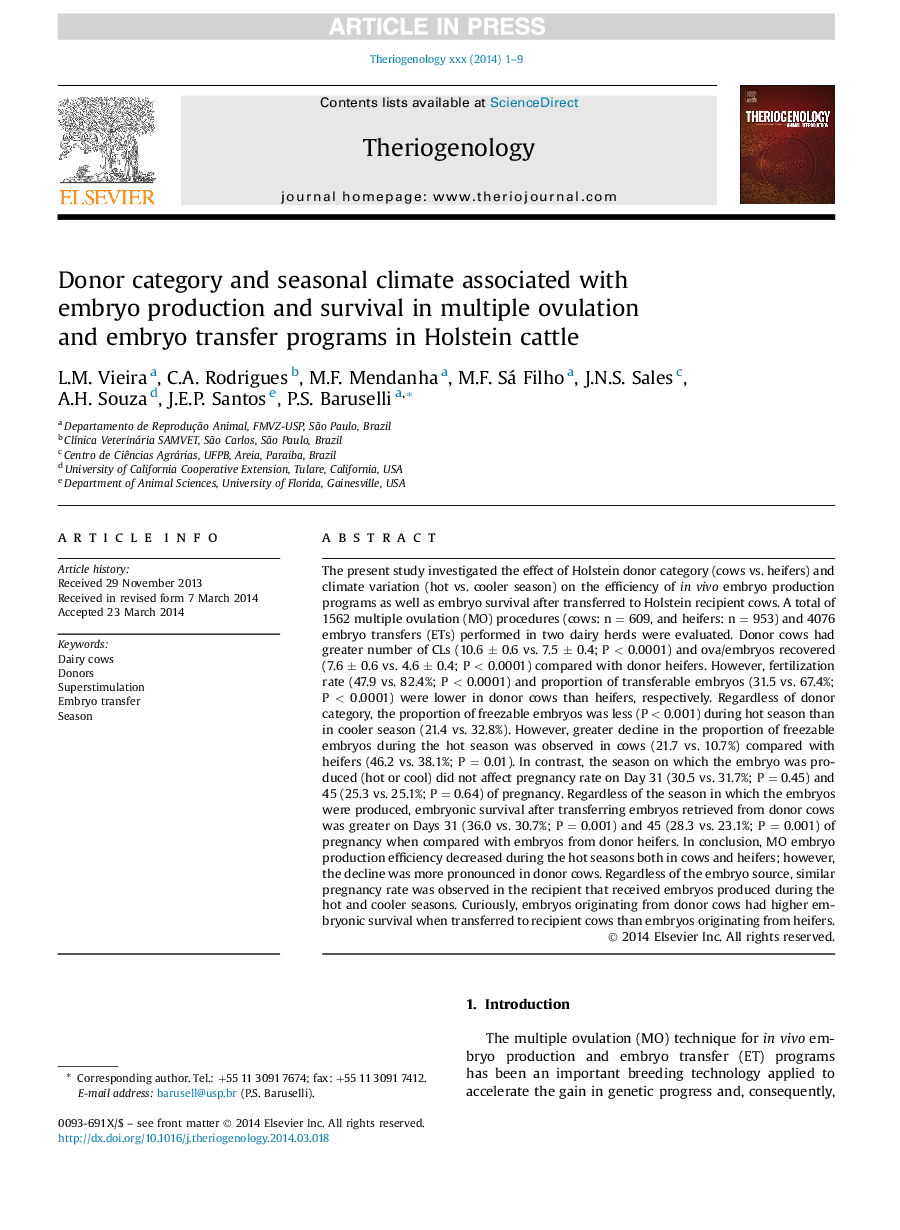| Article ID | Journal | Published Year | Pages | File Type |
|---|---|---|---|---|
| 10891945 | Theriogenology | 2014 | 9 Pages |
Abstract
The present study investigated the effect of Holstein donor category (cows vs. heifers) and climate variation (hot vs. cooler season) on the efficiency of in vivo embryo production programs as well as embryo survival after transferred to Holstein recipient cows. A total of 1562 multiple ovulation (MO) procedures (cows: n = 609, and heifers: n = 953) and 4076 embryo transfers (ETs) performed in two dairy herds were evaluated. Donor cows had greater number of CLs (10.6 ± 0.6 vs. 7.5 ± 0.4; P < 0.0001) and ova/embryos recovered (7.6 ± 0.6 vs. 4.6 ± 0.4; P < 0.0001) compared with donor heifers. However, fertilization rate (47.9 vs. 82.4%; P < 0.0001) and proportion of transferable embryos (31.5 vs. 67.4%; P < 0.0001) were lower in donor cows than heifers, respectively. Regardless of donor category, the proportion of freezable embryos was less (P < 0.001) during hot season than in cooler season (21.4 vs. 32.8%). However, greater decline in the proportion of freezable embryos during the hot season was observed in cows (21.7 vs. 10.7%) compared with heifers (46.2 vs. 38.1%; P = 0.01). In contrast, the season on which the embryo was produced (hot or cool) did not affect pregnancy rate on Day 31 (30.5 vs. 31.7%; P = 0.45) and 45 (25.3 vs. 25.1%; P = 0.64) of pregnancy. Regardless of the season in which the embryos were produced, embryonic survival after transferring embryos retrieved from donor cows was greater on Days 31 (36.0 vs. 30.7%; P = 0.001) and 45 (28.3 vs. 23.1%; P = 0.001) of pregnancy when compared with embryos from donor heifers. In conclusion, MO embryo production efficiency decreased during the hot seasons both in cows and heifers; however, the decline was more pronounced in donor cows. Regardless of the embryo source, similar pregnancy rate was observed in the recipient that received embryos produced during the hot and cooler seasons. Curiously, embryos originating from donor cows had higher embryonic survival when transferred to recipient cows than embryos originating from heifers.
Related Topics
Life Sciences
Agricultural and Biological Sciences
Animal Science and Zoology
Authors
L.M. Vieira, C.A. Rodrigues, M.F. Mendanha, M.F. Sá Filho, J.N.S. Sales, A.H. Souza, J.E.P. Santos, P.S. Baruselli,
